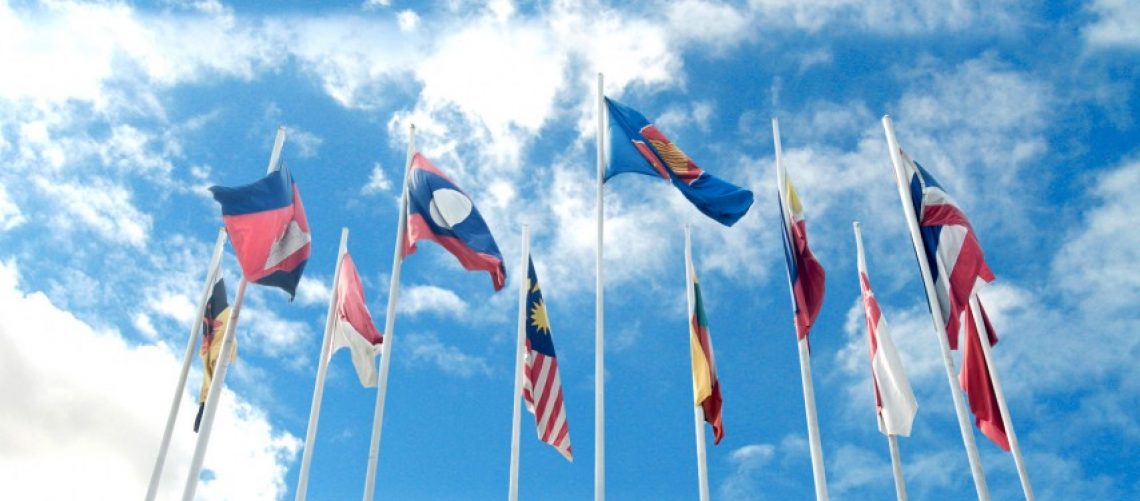- The Second ASEAN-EEC Conference on industrial Cooperation was held in Jakarta from 26 to 28 February 1979 in a spirit of friendship and cooperation. The Conference was officially opened by H.E. Soeharto, President of the Republic of Indonesia. It was attended by 776 official participants from the EEC and ASEAN countries and numerous supporting staff from Europe.
- The Conference was co-sponsored by ASEAN, the EEC Commission and four European Banking Groups, ABECOR, EBIC, EUROPARTNERS and INTERALPHA.
- The Conference discussed in depth the following eight sectors:i) Chemical Industries, attended by 130 participants
ii) Electrical and Electronic Industries, attended by 102 participants
iii) industrial Transformation of Agricultural products, attended by 143 participants
iv) Machinery and Metal Engineering Industries, attended by 145 participants
v) Timber and Timber-based Industries, attended by 124 participants
vi) Precision Engineering Industries, attended by 63 participants
vii) Transport and Communications Equipment manufacturing Industries, attended by 116 participants
viii) Export Crop Plantation, attended by 101 participants
- The Sectoral Discussions were accompanied by many individual private meetings.
- The number of appointments made by the participants indicated the great interest they attached to the Conference.
- The Conference is considered as a major step forward in ASEAN-EEC Cooperation and expressed a strong desire to intensify the existing links through joint ventures in the field of capital investment transfer of technology and know-how as well as of operational skill in industrial cooperation.
- The promising outcome of the Conference has convinced the ASEAN governments and the Commission of the European Communities of the necessity to put into effect as soon as possible the decisions of the Ministerial Meeting of November 1978 which envisaged the creation of a permanent forum for the continuation of the contacts and initiatives between businessmen of both region.
- The Meeting recognized the importance of close collaboration between private sectors of the to regional economic groupings.
- In this context the ASEAN – CCI will have an increasingly significant role to play.
- ABOUT ASEANThe Association of Southeast Asian Nations, or ASEAN, was established on 8 August 1967 in Bangkok, Thailand, with the signing of the ASEAN Declaration (Bangkok Declaration) by the Founding Fathers of ASEAN: Indonesia, Malaysia, Philippines, Singapore and Thailand. Brunei Darussalam joined ASEAN on 7 January 1984, followed by Viet Nam on 28 July 1995, Lao PDR and Myanmar on 23 July 1997, and Cambodia on 30 April 1999, making up what is today the ten Member States of ASEAN.Menu
- WHAT WE DO
ASEAN organs always strive to achieve ASEAN’s goals and objectives, the Secretary-General of ASEAN and the ASEAN Secretariat shall be functioned as coordinating Secretariat to help facilitate effective decision-making withing and amongst ASEAN bodies. In addition, each Member State shall appoint a Permanent Representative to liaise with Secretary-General of ASEAN and the ASEAN Secretariat
Menu - WHO WE WORK WITH
ASEAN shall develop friendly relations and mutually beneficial dialogues, cooperation and partnerships with countries and sub-regional, regional and international organisations and institutions. This includes external partners, ASEAN entities, human rights bodies, non-ASEAN Member States Ambassadors to ASEAN, ASEAN committees in third countries and international organisations, as well as international / regional organisations.
Menu - OUR COMMUNITIES
The rodmap for an ASEAN Community (2009-2015) was declared by the leaders in 2009. The ASEAN Community, anchored on three community pillars: Political-Security Community, Economic Community, Socio-Cultural Community was launched in 2015. The ASEAN 2025: Forging Ahead Together was introduced in 2015 as a Post-2015 Vision. It comprises the ASEAN Community Vision 2025, the ASEAN Political-Security Community Blueprint 2025, the ASEAN Economic Community Blueprint 2025 and the ASEAN Socio-Cultural Community Blueprint 2025
Menu - SITEMAP





